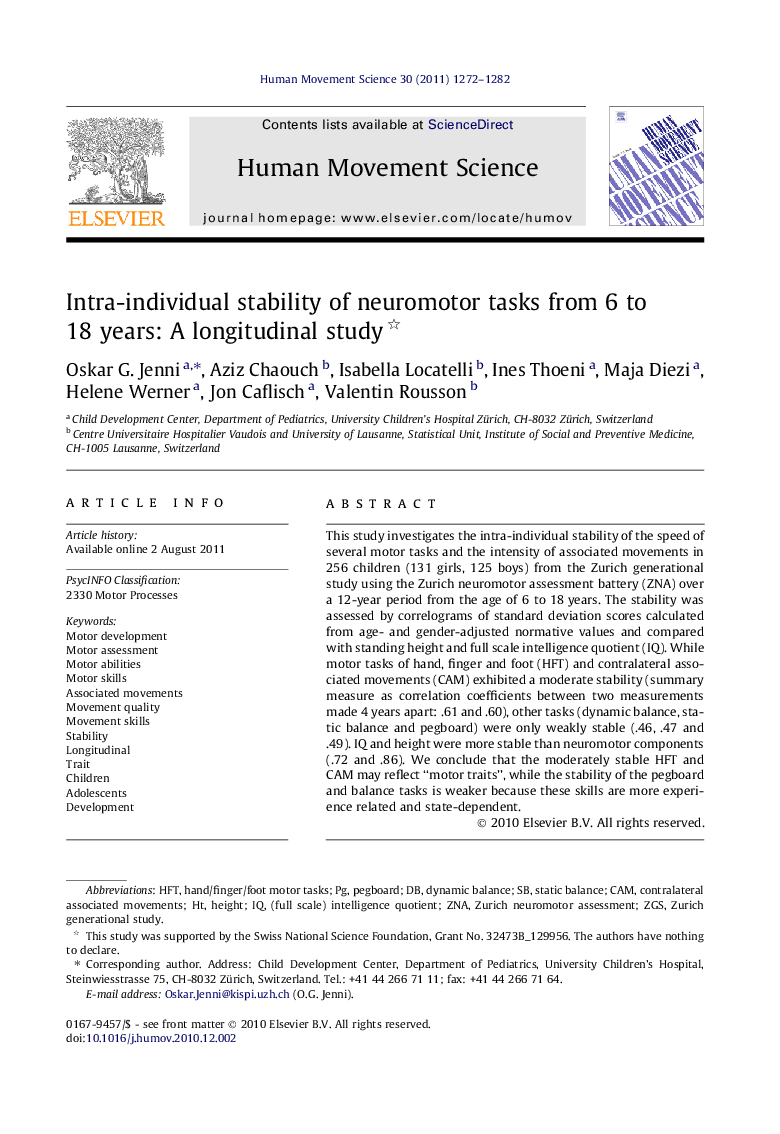| Article ID | Journal | Published Year | Pages | File Type |
|---|---|---|---|---|
| 928500 | Human Movement Science | 2011 | 11 Pages |
This study investigates the intra-individual stability of the speed of several motor tasks and the intensity of associated movements in 256 children (131 girls, 125 boys) from the Zurich generational study using the Zurich neuromotor assessment battery (ZNA) over a 12-year period from the age of 6 to 18 years. The stability was assessed by correlograms of standard deviation scores calculated from age- and gender-adjusted normative values and compared with standing height and full scale intelligence quotient (IQ). While motor tasks of hand, finger and foot (HFT) and contralateral associated movements (CAM) exhibited a moderate stability (summary measure as correlation coefficients between two measurements made 4 years apart: .61 and .60), other tasks (dynamic balance, static balance and pegboard) were only weakly stable (.46, .47 and .49). IQ and height were more stable than neuromotor components (.72 and .86). We conclude that the moderately stable HFT and CAM may reflect “motor traits”, while the stability of the pegboard and balance tasks is weaker because these skills are more experience related and state-dependent.
